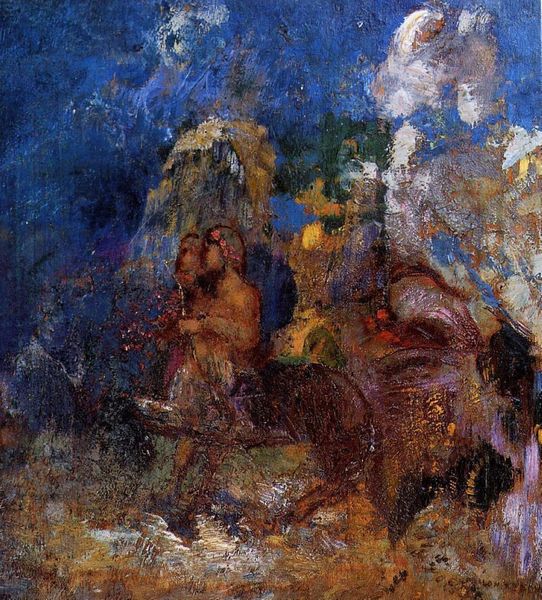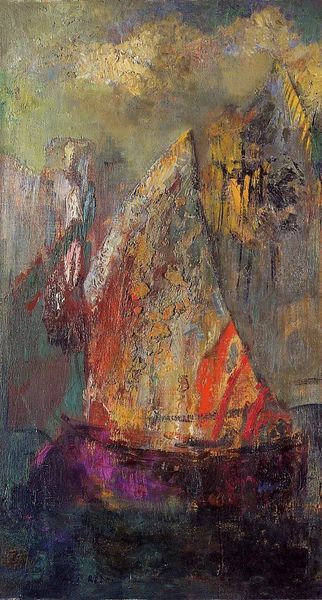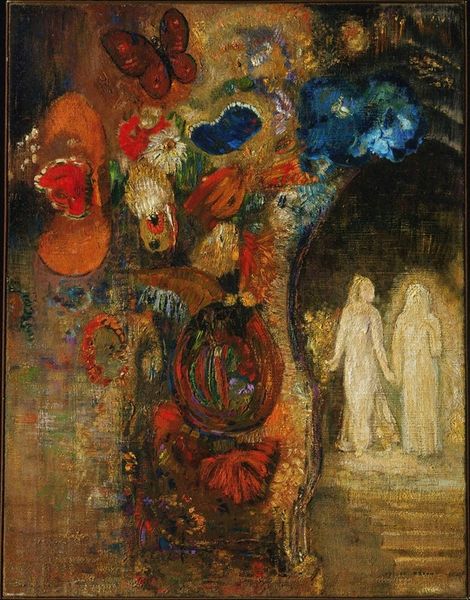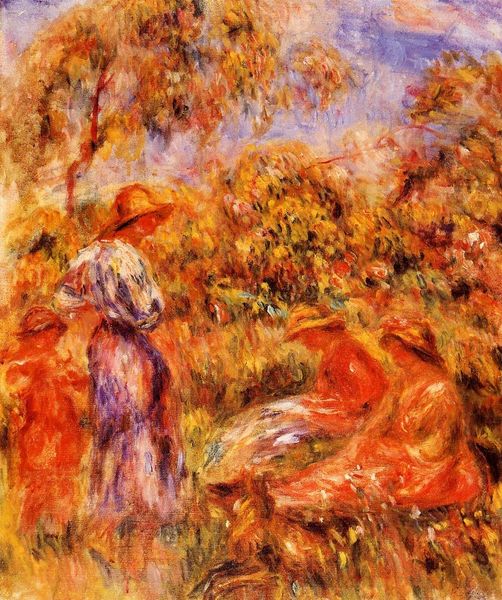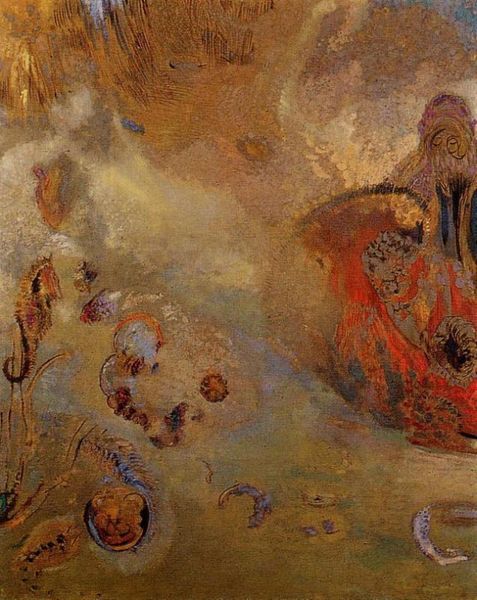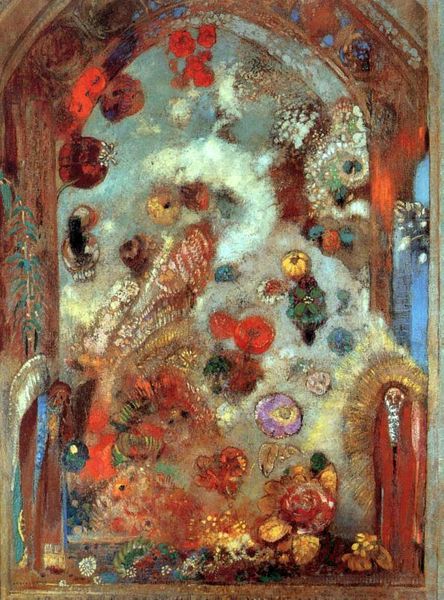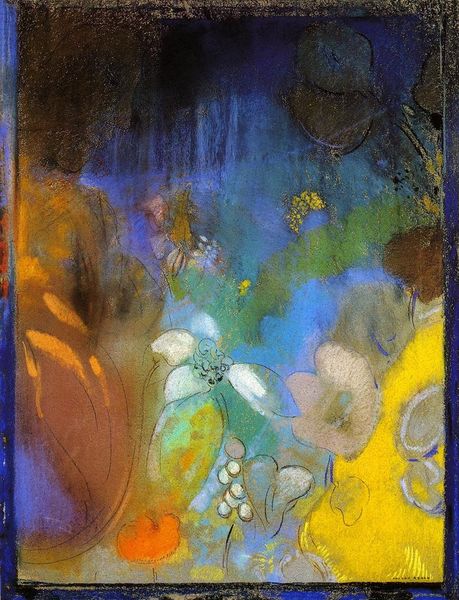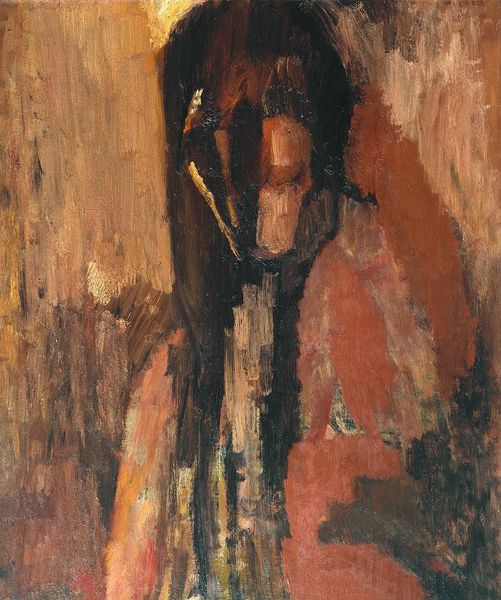
painting, oil-paint
#
portrait
#
narrative-art
#
painting
#
oil-paint
#
figuration
#
symbolism
#
expressionist
Copyright: Public domain
Curator: Looking at "The Apparition," an oil painting by Odilon Redon, I'm immediately struck by its textural density. The impasto seems to build a world as much as depict it. Editor: It evokes a space haunted by symbolism, doesn't it? The piece, a portrait of perhaps a biblical figure—Salome maybe—emerges from an indeterminate space of blurred hues. We must consider its social underpinnings: the late 19th century’s fascination with femme fatales. Curator: Precisely. You notice the deliberate brushstrokes. How they contribute to this spectral feeling. This level of materiality reflects Redon's process; he builds up layers, obscuring and revealing at the same time. Editor: The work invites dialogue between our modern understanding of the other as villain and a historical painting representing this social anxiety. How would you assess the significance of using such bold oil paints and looser brushstrokes as opposed to more traditional medium/techniques for portraiture from this period? Curator: Well, the loose brushwork allows him to merge the figure with the background, literally crafting a dreamscape, using oil paint for expressive intensity that contrasts traditional academic methods that favors meticulous and precise work, almost devoid of any trace of human labor. This resonates with other contemporary artists who were keen on pushing the boundaries. Editor: A painting in dialogue with other movements... Yet its portrayal has always provoked strong opinions concerning female representation. The association with sin and mystery. Curator: Right, this symbolic weight shapes her interpretation and perhaps affects the market and appreciation of Redon’s practice, making it attractive to a new type of buyer. Editor: And doesn’t Redon, using oil paint so visibly, seem to acknowledge this weight through the very material with which he represents her? Curator: Certainly. Thinking about this work in terms of process really exposes a whole new angle for reflecting upon these broader concerns around the representation of marginalized people and the artist's choices and involvement within society. Editor: Seeing this piece through your lens makes visible what would otherwise remain concealed. I agree, thinking critically about material and labor reshapes my understanding of narrative.
Comments
No comments
Be the first to comment and join the conversation on the ultimate creative platform.

